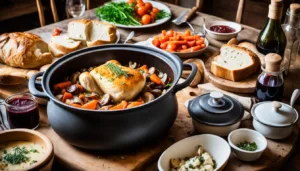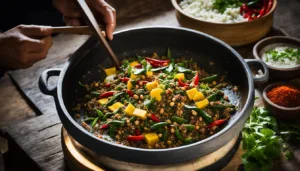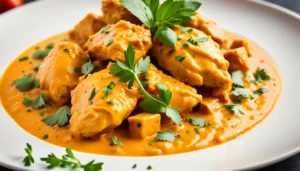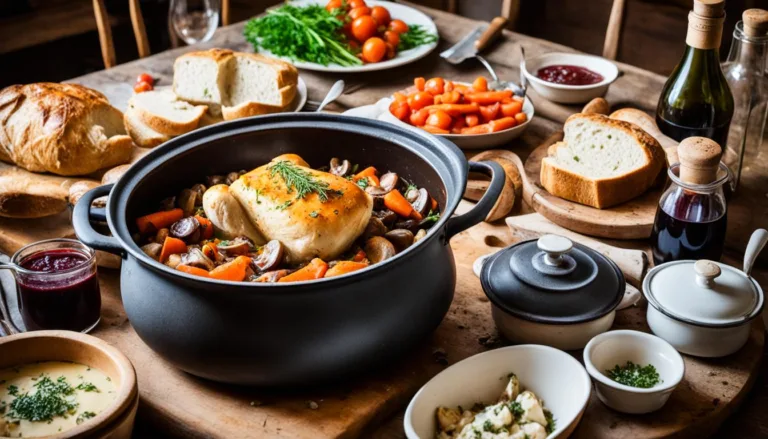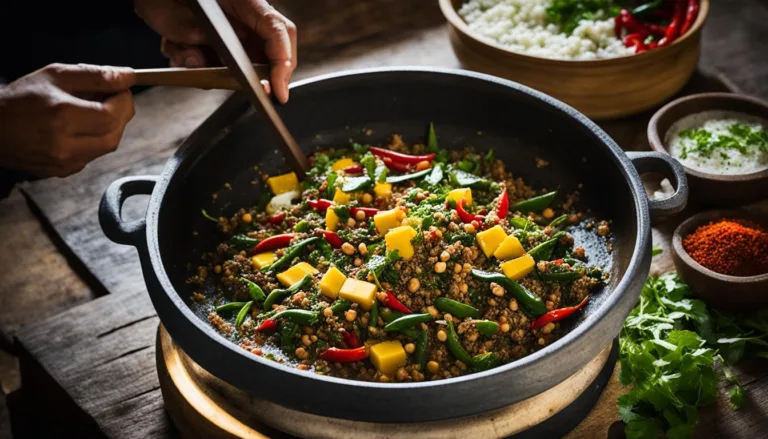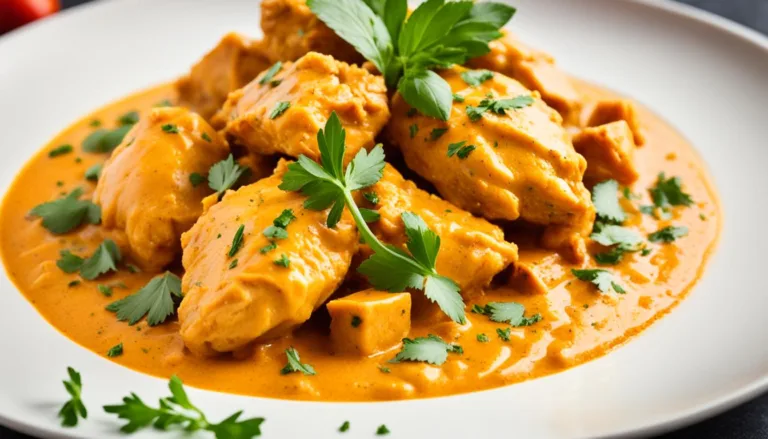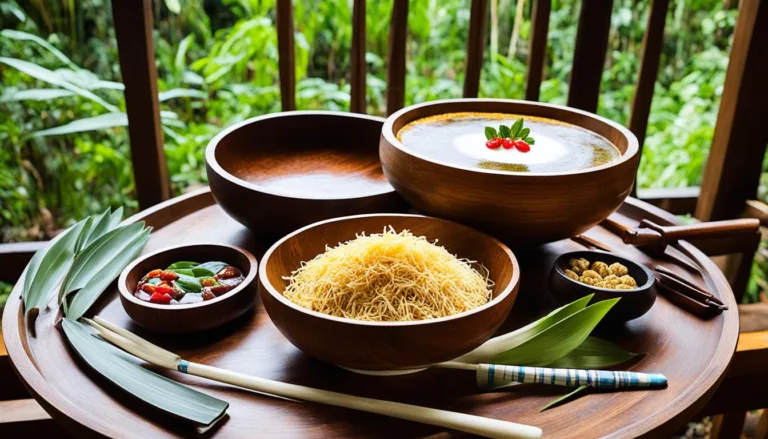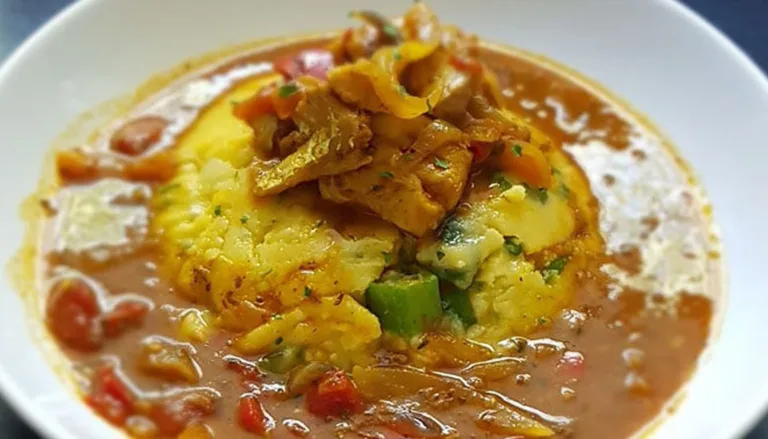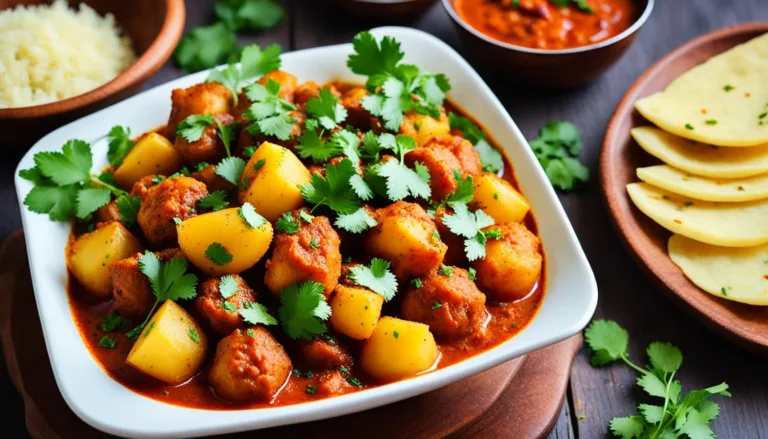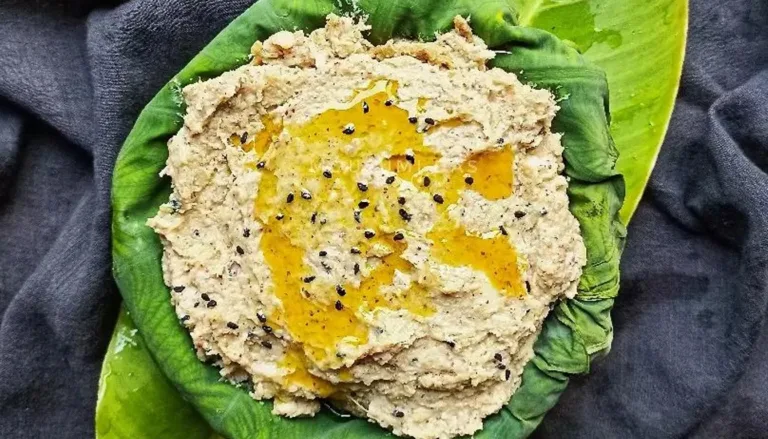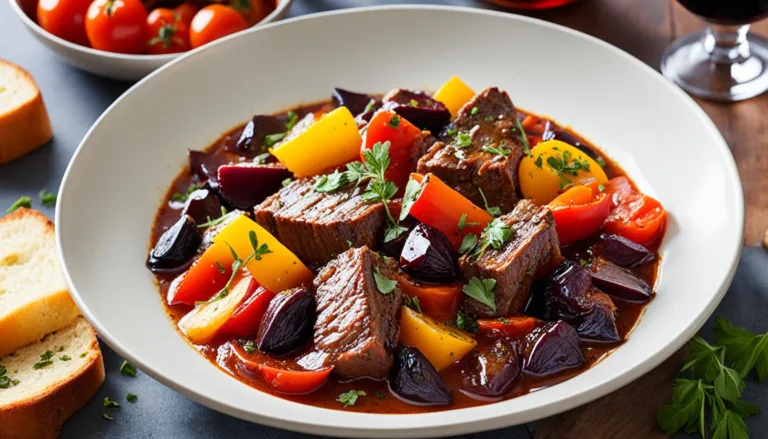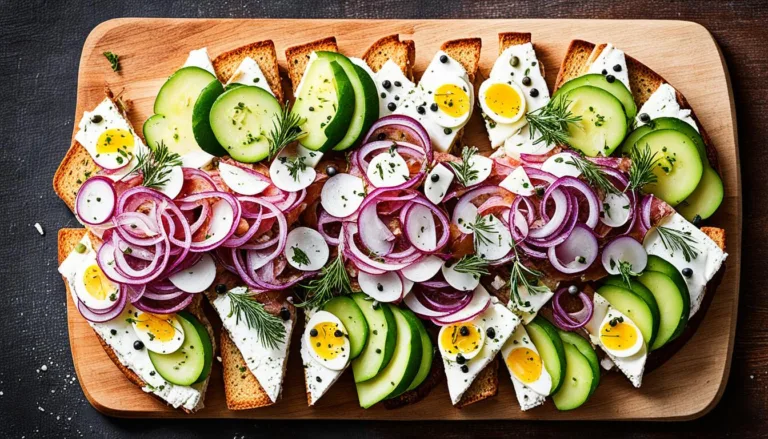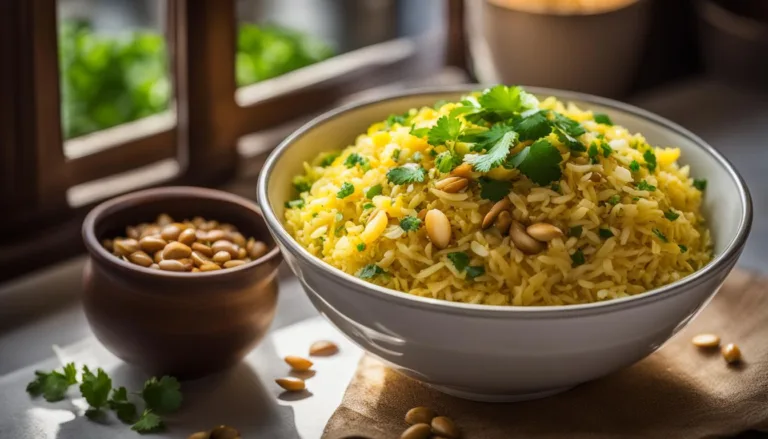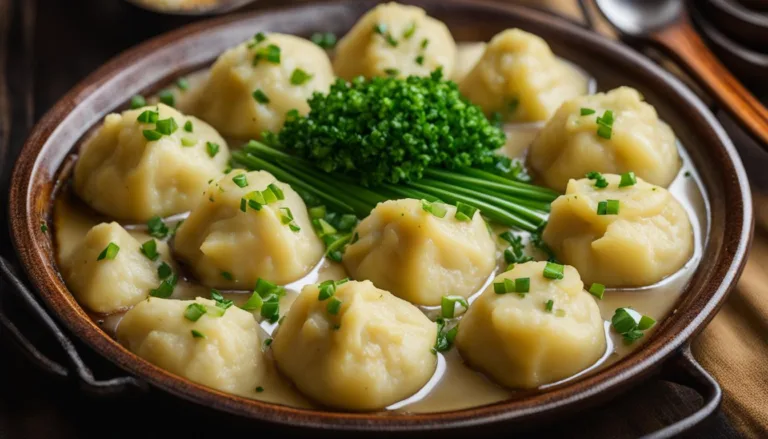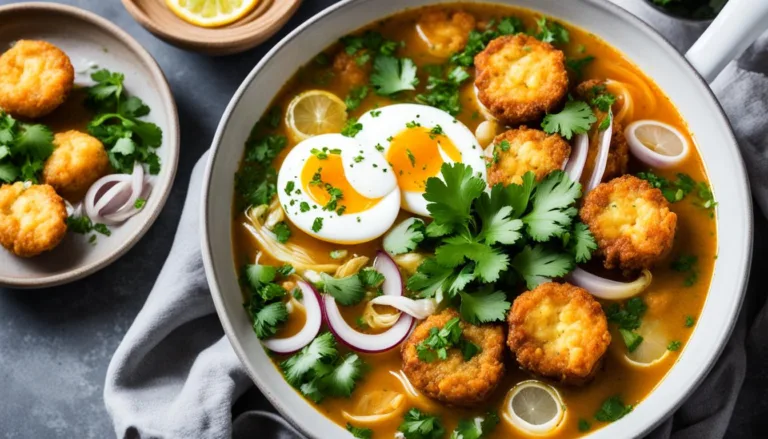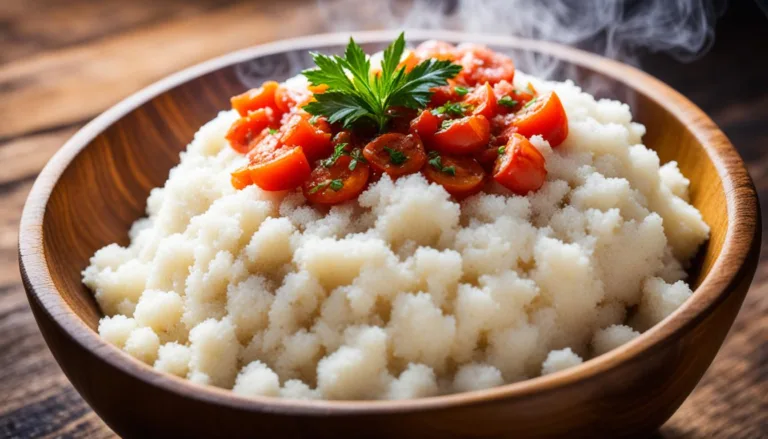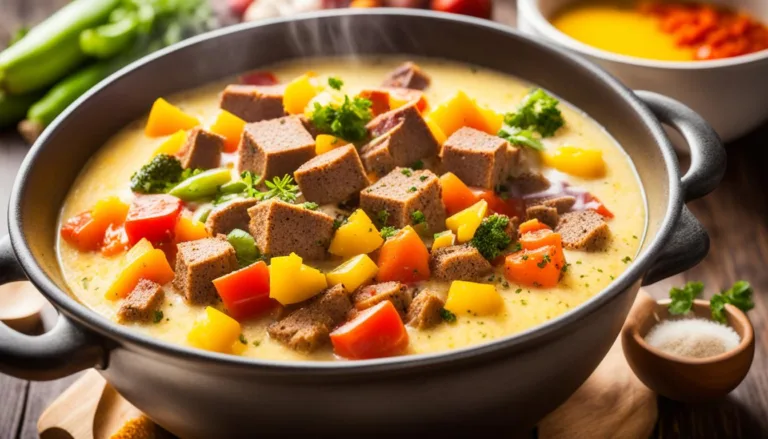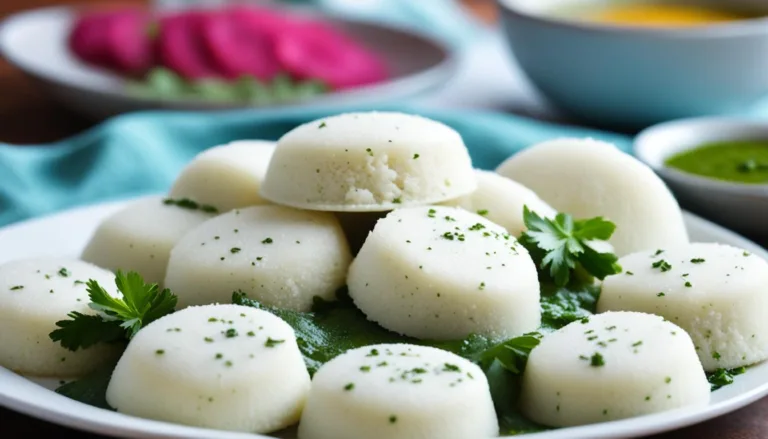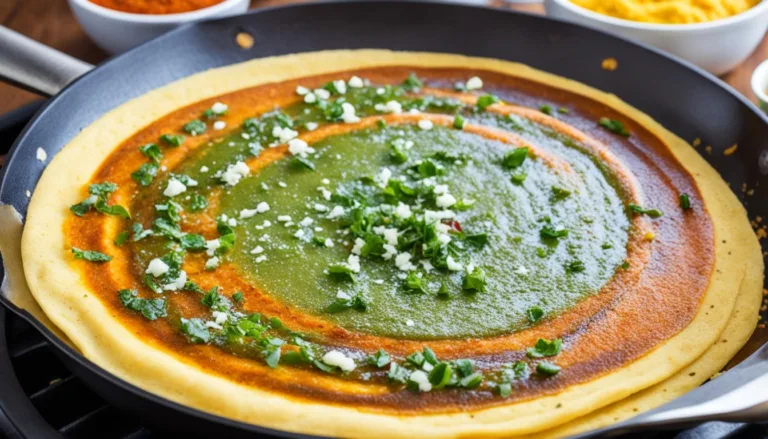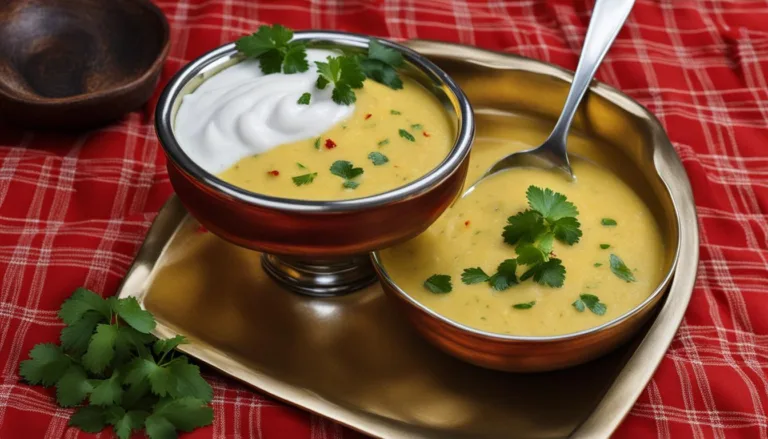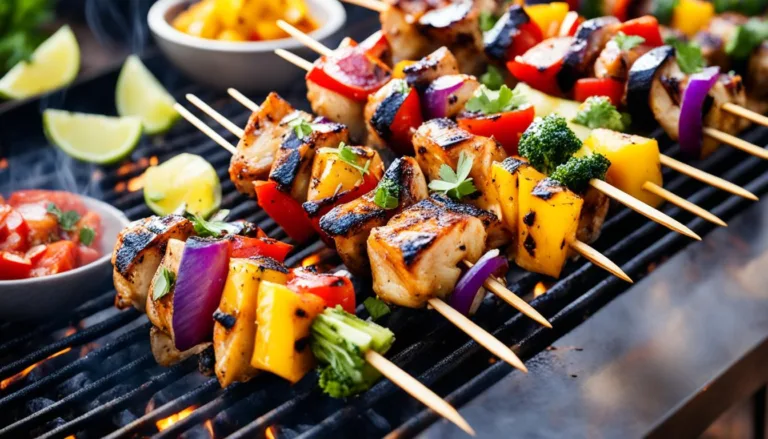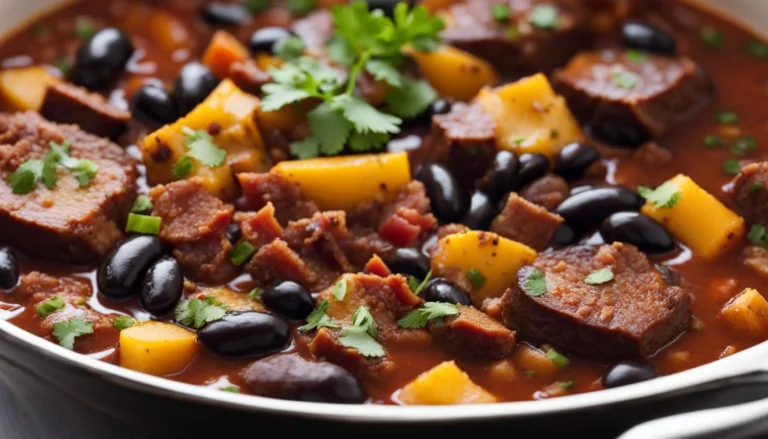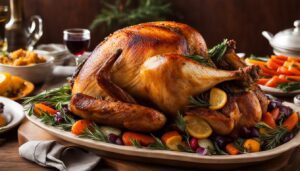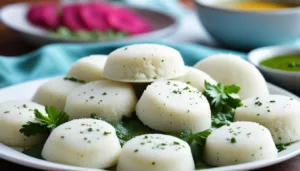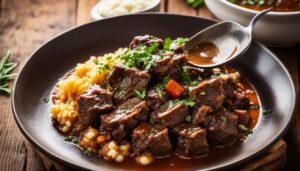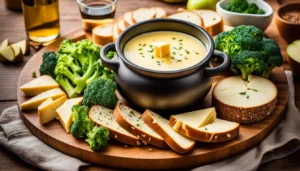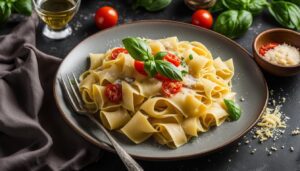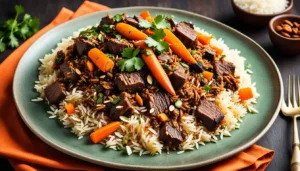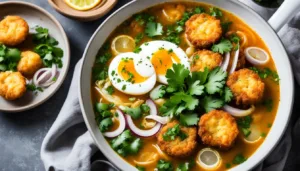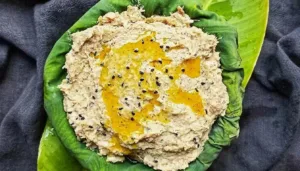Welcome to our ultimate guide on how to prepare the perfect Thanksgiving turkey with stuffing. As the holidays approach, many of us are eagerly anticipating the cherished tradition of gathering around the table with loved ones, indulging in a mouthwatering feast that captures the spirit of gratitude and celebration. The centerpiece of this festive occasion is often a beautifully roasted turkey, succulent and flavorful, accompanied by a delicious stuffing that adds an extra layer of taste and texture.
In this comprehensive guide, we will take you on a culinary journey that covers everything you need to know about crafting a memorable Thanksgiving feast. From selecting the right turkey to mastering the art of brining, from understanding the difference between stuffing and dressing to carving the perfect slices, we’ll provide you with expert tips and techniques that will elevate your cooking skills and impress your guests.
Whether you’re a seasoned chef or a novice in the kitchen, our step-by-step instructions and detailed explanations will ensure that you can confidently create a Thanksgiving turkey with stuffing that will leave everyone craving more. So, let’s dive in and explore the secrets to a truly unforgettable holiday meal.
Table of Contents
Key Takeaways:
- Our ultimate guide will help you prepare a mouthwatering Thanksgiving turkey with delicious stuffing.
- Learn how to choose the perfect turkey, whether fresh or frozen, and understand different turkey labels.
- Discover the best methods for safely thawing your turkey.
- Explore traditional and dry brining techniques for enhancing the flavor and juiciness of your turkey.
- Understand the regional debate between stuffing and dressing and discover the variations in ingredients and techniques.
Choosing the Perfect Turkey for Thanksgiving
When it comes to the centerpiece of your Thanksgiving feast, selecting the perfect turkey is essential. In this section, we’ll explore the key considerations for choosing a turkey that will delight your guests and create a memorable holiday meal.
Fresh vs. Frozen: Selecting the Right Type
One of the first decisions you’ll need to make is whether to go with a fresh or frozen turkey. Each has its own advantages and considerations.
Fresh Turkey: A fresh turkey can offer superior flavor and texture, as it hasn’t been frozen. It’s important to note that fresh turkeys need to be cooked within a few days of purchase and may require special orders from your local butcher or supermarket.
Frozen Turkey: Frozen turkeys are convenient and widely available. They can be purchased well in advance, allowing you to plan your Thanksgiving preparations in advance. Keep in mind that a frozen turkey requires proper thawing before cooking.
Ultimately, the choice between fresh and frozen turkey depends on your personal preference and the availability of options in your area.
Understanding Turkey Labels: Organic, Free-range, and More
When browsing for a turkey, you may come across various labels that indicate certain qualities or production methods. Here are some common turkey labels and their meanings:
| Label | Meaning |
|---|---|
| Organic | Turkeys labeled organic are raised on organic feed, without antibiotics or growth hormones. They have been certified by an authorized agency. |
| Free-range | Free-range turkeys have access to the outdoors and are not confined to cages. They may have more space to roam and are generally considered to have better welfare. |
| Heritage | Heritage turkeys are older breeds that have been raised for generations. They offer unique flavors and textures but may have less meat compared to commercial varieties. |
Understanding these labels can help you make an informed decision based on your preferences and values.
Sizing Up: How Much Turkey Per Person?
Calculating the right amount of turkey is crucial to ensure everyone at your Thanksgiving table is satisfied. A rough guideline is to plan for about 1 pound (0.45 kg) of turkey per person.
Keep in mind that this estimate can vary depending on factors such as the number of side dishes and appetites of your guests. To be on the safe side, consider rounding up and factoring in leftovers.
Now that we’ve covered the considerations for choosing the perfect turkey, let’s move on to the next section to learn how to properly thaw your turkey for Thanksgiving.
Mastering the Thawing Process
Thawing a Thanksgiving turkey properly is essential for ensuring safe and delicious results. In this section, we will provide you with detailed instructions on how to thaw your turkey correctly. We will cover two methods: refrigerator thawing and the quick-thaw method. Let’s dive in!
Safety First: Refrigerator Thawing Explained
Refrigerator thawing is the recommended method for thawing a turkey. It allows the bird to thaw slowly and evenly, reducing the risk of bacterial growth. Follow these steps for refrigerator thawing:
- Remove the turkey from its packaging and place it in a shallow, leak-proof container to catch any liquid.
- Ensure the turkey is completely covered, and place it on the bottom shelf of your refrigerator.
- Allow approximately 24 hours of thawing time for every 4-5 pounds of turkey. Refer to the table below for estimated thawing times:
Turkey Weight Thawing Time (Refrigerator) 8-12 pounds 1-2 days 12-16 pounds 2-3 days 16-20 pounds 3-4 days 20-24 pounds 4-5 days - Once the turkey is completely thawed, proceed with your chosen cooking method.
Quick-Thaw Method: When Time Is of the Essence
If you need to thaw your turkey quickly, you can use the cold water quick-thaw method. Follow these steps:
- Remove the turkey from its packaging and place it in a leak-proof plastic bag.
- Fill a large container or sink with cold water.
- Submerge the turkey in the cold water, breast side down.
- Change the water every 30 minutes to keep it cold. Allow 30 minutes of thawing time per pound of turkey. Refer to the table below for estimated thawing times:
| Turkey Weight | Thawing Time (Cold Water) |
|---|---|
| 8-12 pounds | 4-6 hours |
| 12-16 pounds | 6-8 hours |
| 16-20 pounds | 8-10 hours |
| 20-24 pounds | 10-12 hours |
Once the turkey is completely thawed, discard any packaging and proceed with your chosen cooking method. Remember to prioritize food safety when using the quick-thaw method.
Now that you have mastered the thawing process, you are ready to move on to the next step in preparing your Thanksgiving turkey. Stay tuned for our next section, where we will discuss the art of brining to achieve a flavorful and juicy turkey!

The Art of Brining: Flavorful and Juicy
Brining is a technique that can take your Thanksgiving turkey to new heights of flavor and juiciness. Whether you opt for a traditional wet brine or a drier method known as dry brining, the process involves soaking the turkey in a saltwater solution to enhance its taste and texture. In this section, we’ll explore both traditional brining techniques and the simpler, equally delicious alternative of dry brining.
Traditional Brining Techniques
When it comes to traditional brining, there are a few key steps to follow:
- First, you’ll need to prepare a brine solution by dissolving salt in water. You can add other flavorings like herbs, spices, and sugar to enhance the taste.
- Next, immerse the turkey in the brine, ensuring that it is fully submerged. You can use a large container, brining bag, or even a clean cooler to hold the turkey and brine.
- Allow the turkey to brine for the recommended amount of time, usually around 12-24 hours, depending on the size of the bird.
- After brining, rinse the turkey thoroughly to remove excess salt and pat it dry before cooking.
Traditional brining can result in a turkey that is not only flavorful but also incredibly moist. The salt in the brine helps the turkey retain moisture, resulting in a juicier final product. Additionally, the added herbs and spices infuse the meat with delicious flavors that will leave your guests craving for more.
Dry Brining: A Simpler, Equally Delicious Alternative
If you’re looking for a quicker and easier brining method, dry brining is a fantastic option. Unlike traditional wet brining, this technique involves applying a salt rub directly to the turkey’s surface and letting it sit in the refrigerator. The salt helps to draw out moisture from the turkey, creating a concentrated brine effect.
To dry brine your Thanksgiving turkey:
- Begin by generously seasoning the turkey with kosher salt or a salt mixture, ensuring that every part of the bird is covered.
- Place the seasoned turkey on a baking sheet or in a roasting pan and refrigerate uncovered for at least 24 hours.
- After the brining period, rinse the turkey to remove excess salt and pat it dry.
Dry brining offers the same benefits as traditional brining, resulting in a flavorful and moist turkey. It also forms a crispy, flavorful skin that is sure to impress your guests.
Whether you choose traditional wet brining or the simplicity of dry brining, both techniques can elevate your Thanksgiving turkey to new heights of flavor and juiciness. Experiment with different herbs and spices in your brine to add your own unique twist to this classic Thanksgiving tradition.
Stuffing vs. Dressing: A Regional Debate
When it comes to Thanksgiving side dishes, one debate that has divided families and sparked lively discussions is the distinction between stuffing and dressing. These two terms are often used interchangeably, but there are regional variations that set them apart.
American Regional Variations in Thanksgiving Side Dishes
In the United States, Thanksgiving side dishes vary greatly from region to region. Each area has its own culinary traditions and unique flavors that influence the dishes served alongside the Thanksgiving turkey.
For example, in the Northeast, particularly in New England, traditional Thanksgiving dinners often feature stuffing made with bread, onions, celery, sage, and other aromatic herbs. This stuffing is typically moist and cooked inside the turkey, absorbing the delicious juices as the bird roasts.
On the other hand, in the Southern states, such as Louisiana and Texas, cornbread dressing takes center stage. Made with cornbread, onions, peppers, and a medley of spices, this dressing has a slightly drier texture and is typically baked separately from the turkey.
Moving west to the Midwest, dishes like wild rice stuffing or sausage stuffing with apples and cranberries are popular choices. The addition of regional ingredients adds a unique twist to the traditional Thanksgiving fare.
Out on the West Coast, the Pacific Northwest showcases their culinary flair with seafood stuffing featuring crab or oysters, reflecting the region’s abundant coastal offerings.
These are just a few examples of the regional variations in Thanksgiving side dishes found across the United States, highlighting the diverse flavors and culinary traditions that make this holiday truly special.
The Stuffing and Dressing Difference: More Than Just Name
While the terms “stuffing” and “dressing” are often used interchangeably, there is a subtle difference that goes beyond just their names. The primary distinction lies in how these dishes are prepared and cooked.
Stuffing is traditionally the term used when a mixture of bread, vegetables, herbs, and seasonings is stuffed inside the cavity of the turkey before roasting. As the turkey cooks, the stuffing absorbs the flavorful juices, resulting in a moist and savory accompaniment to the roasted bird.
Dressing, on the other hand, refers to the same mixture of ingredients that is baked separately from the turkey. Whether in a casserole dish or individual servings, dressing is cooked on its own, allowing it to develop a slightly drier and crispier texture.
The difference between stuffing and dressing goes beyond their cooking methods and regional variations; it captures the essence of culinary traditions and the unique flavors of each region.

Thanksgiving Turkey with Stuffing: A Step-by-Step Guide
Preparing a Thanksgiving turkey with stuffing can be a daunting task, especially for those who are new to hosting this beloved holiday meal. But fear not! We have put together a comprehensive step-by-step guide to help you navigate through the process and create a delicious centerpiece for your Thanksgiving feast. So let’s get started!
Step 1: Prepping the Turkey
Start by ensuring that your turkey is fully thawed, following the guidelines mentioned in Section 3 of this guide. Remove the giblets and neck from the cavity, and rinse the turkey under cold water. Pat it dry with paper towels, inside and out. Season the cavity with salt and pepper, or any other desired spices.
Step 2: Creating the Stuffing
Now, let’s move on to creating the flavorful stuffing that will complement your turkey perfectly. Use your favorite stuffing recipe or try something new from Section 10. Sauté onions, celery, and other desired vegetables in butter until they are tender. Add your choice of herbs, spices, and any additional ingredients that your recipe calls for. Then, combine the sautéed vegetables with bread cubes or other desired stuffing base in a large mixing bowl. Add broth or stock gradually until the mixture is moist but not overly saturated.
Step 3: Stuffing the Turkey
With the stuffing ready, it’s time to stuff the turkey. Begin by loosely filling the cavity of the turkey with stuffing, being careful not to overstuff as it can lead to uneven cooking. Once the cavity is filled, you can secure the neck skin to the back using metal skewers or kitchen twine. Tuck the wings underneath the turkey to prevent them from burning during cooking.
Step 4: Cooking the Turkey
Place the stuffed turkey on a rack in a roasting pan. Tent the turkey with aluminum foil, leaving enough space for air circulation. Preheat your oven to the recommended temperature, based on the weight of your turkey. Roast the turkey according to the cooking times provided in Section 8. Remember to baste the turkey periodically to ensure moistness.
Step 5: Checking for Doneness
To ensure that your turkey is cooked thoroughly, use a meat thermometer to check its internal temperature. The thickest part of the turkey, typically the thigh, should register 165°F (74°C). Once the turkey reaches this temperature, remove it from the oven and let it rest for 20-30 minutes before carving.
Step 6: Carving and Serving the Turkey
Once the turkey has rested, it’s time to carve and serve your delicious masterpiece. Follow the carving techniques outlined in Section 9 to achieve picture-perfect slices. Arrange the carved turkey on a platter, and garnish with fresh herbs or other desired decorations. Serve alongside your favorite Thanksgiving side dishes and enjoy!
Congratulations! You have successfully prepared a Thanksgiving turkey with stuffing using our step-by-step guide. We hope this comprehensive and easy-to-follow guide has helped make your holiday cooking experience enjoyable and stress-free. Now, sit back, relax, and savor the flavors of this traditional Thanksgiving dish with your loved ones.
Secrets to Cooking and Basting
When it comes to preparing a Thanksgiving turkey that will wow your guests, cooking and basting are key. We’ve gathered some secrets and tips to help you achieve a perfectly cooked and moist turkey, along with suggestions for flavorful basting methods. Let’s dive in!
The Perfect Cooking Temperature
One of the secrets to cooking a Thanksgiving turkey is getting the temperature just right. For a moist and tender bird, roast your turkey at a consistent temperature of 325°F (163°C). This allows the turkey to cook evenly without drying out.
Use a Meat Thermometer
To ensure your turkey is cooked to perfection, use a meat thermometer to check its internal temperature. Insert the thermometer into the thickest part of the thigh without touching the bone. The turkey is done when it reaches 165°F (74°C).
Brine for Flavor and Moisture
“One of our top secrets for a flavorful and juicy turkey is to brine it before cooking. Brining involves soaking the turkey in a solution of salt, water, and spices, which helps to enhance the flavor and moisture retention of the meat. Give it a try!”
Enhance Flavor with Aromatics
To infuse your turkey with additional flavor, stuff the cavity with aromatic ingredients such as onions, garlic, herbs, citrus fruits, and spices. As the turkey roasts, the aromatics will release their flavors, resulting in a more delicious and fragrant bird.
Basting for Extra Moisture
Basting the turkey throughout the cooking process is another secret to a moist and succulent bird. Every 30 minutes, use a baster or spoon to drizzle the juices from the bottom of the roasting pan over the turkey. This helps to keep the meat moist and adds flavor.
Try a Flavorful Basting Glaze
For an extra burst of flavor, consider using a flavorful basting glaze. Whether it’s a butter and herb glaze, a maple syrup and bourbon glaze, or a honey and Dijon mustard glaze, applying a tasty coating to the turkey will enhance its taste and appearance.

By following these cooking and basting secrets, you’ll be well on your way to serving a Thanksgiving turkey that is moist, tender, and bursting with flavor. Now that you have mastered the secrets, it’s time to move on to the next section where we will discuss timings and temperatures for the perfect turkey.
Disclaimer: The image shown above is for visual representation purposes only and may not depict the exact cooking and basting techniques mentioned in this article.
Timings and Temperatures for the Perfect Turkey
When it comes to cooking a Thanksgiving turkey, accurate timings and temperatures play a crucial role in achieving a delicious and perfectly cooked bird. Whether you’re a seasoned chef or a novice in the kitchen, having the right cooking guidelines is essential for a successful holiday feast.
Let’s start with the basics. The recommended cooking temperature for a Thanksgiving turkey is 325°F (163°C). This allows for even cooking and ensures that the turkey reaches a safe internal temperature to eliminate any harmful bacteria. It’s important to use a reliable meat thermometer to check the internal temperature, which should reach 165°F (74°C) in the thickest part of the thigh.
Now, let’s talk timings. The cooking time for a turkey can vary depending on the size of the bird. As a general rule of thumb, you should allow approximately 15 minutes of cooking time per pound (0.45 kg) of turkey. However, it’s always best to refer to a cooking chart or calculator to get precise timings based on the weight of your turkey.
Keep in mind that these timings are estimates, and it’s crucial to rely on the internal temperature rather than the cooking time alone. Factors such as oven temperature accuracy, the presence of stuffing, and the turkey’s temperature before cooking can affect the cooking time.
When cooking your Thanksgiving turkey, it’s important to consider the resting time. After removing the turkey from the oven, allow it to rest for at least 15-30 minutes before carving. Resting allows the juices to redistribute throughout the turkey, resulting in a moist and tender bird. During this time, cover the turkey loosely with foil to retain heat and prevent it from drying out.
For a visual representation of the recommended timings and temperatures, refer to the table below:
| Turkey Weight | Cooking Time (Unstuffed) | Internal Temperature |
|---|---|---|
| 8-12 pounds | 2.75-3 hours | 165°F (74°C) |
| 12-14 pounds | 3-3.75 hours | 165°F (74°C) |
| 14-18 pounds | 3.75-4.25 hours | 165°F (74°C) |
| 18-20 pounds | 4.25-4.5 hours | 165°F (74°C) |
| 20-24 pounds | 4.5-5 hours | 165°F (74°C) |
Remember, these timings are just a guideline, and it’s essential to monitor the temperature using a meat thermometer to ensure your turkey is cooked thoroughly. By following these timings and temperatures, using accurate measurements, and allowing your turkey to rest, you’ll be well on your way to serving a perfectly cooked Thanksgiving turkey that will wow your guests.
Carving Techniques for a Picture-Perfect Presentation
Once your Thanksgiving turkey is perfectly cooked, it’s time to showcase your carving skills for a picture-perfect presentation. With the right carving techniques and tools, you can ensure that each slice is beautifully carved and ready to be enjoyed by your guests.
Tools and Tricks for Effortless Carving
Before you start carving, make sure you have the necessary tools on hand:
- A sharp carving knife: Invest in a high-quality carving knife with a long, thin blade. A sharp knife will make the carving process much easier and result in cleaner slices.
- A carving fork: Use a carving fork to hold the turkey securely in place as you carve. This will help prevent any accidents and ensure more precise carving.
- A cutting board: Choose a sturdy cutting board with a groove to catch any juices that may escape during carving.
Now that you have the right tools, here are some tricks for effortless carving:
- Let the turkey rest: Before you start carving, let the turkey rest for about 20 minutes. This allows the juices to redistribute and makes the meat easier to carve.
- Remove the legs and wings: Start by removing the legs and wings of the turkey. Use a steady hand and the carving knife to separate them from the body.
- Slice the breast meat: Hold the turkey firmly with the carving fork and make thin, even slices across the grain of the breast meat. This will result in tender and flavorful slices.
- Separate the thigh and drumstick: Carefully separate the thigh from the drumstick by cutting through the joint. This will make it easier to serve and enjoy.
- Carve the dark meat: Slice the dark meat, such as the thighs and drumsticks, in the same manner as the breast meat. Aim for uniform slices to ensure an even serving.
How to Serve Your Thanksgiving Masterpiece
Now that you’ve mastered the carving techniques, it’s time to serve your Thanksgiving masterpiece:
- Arrange the carved meat on a platter: Transfer the carved slices of turkey onto a beautiful platter, arranging them in an appealing way. This will create an impressive presentation for your guests.
- Add garnishes and herbs: Sprinkle some fresh herbs or add garnishes like cranberries or citrus slices to enhance the visual appeal of the platter. This will make your turkey even more enticing.
- Keep it warm: To ensure your carved turkey remains warm and juicy, cover the platter loosely with foil while you finish preparing other dishes or serving food. This will help retain the turkey’s temperature.
Remember, carving the turkey is not just about the technique; it’s also about creating an experience. Take your time, enjoy the process, and savor the moment as you serve your Thanksgiving masterpiece to your loved ones.
- Classic Coq au Vin Recipe – French Comfort Food

- Authentic Ema Datshi Recipe | Taste of Bhutan

- Creamy Chicken Butter Masala Recipe – Taste the special and the best!

Delightful Variations of Stuffing Recipes
When it comes to Thanksgiving, stuffing recipes are a vital component of the holiday feast. They add a delicious blend of flavors and aromas, complementing the star of the show – the turkey. To elevate your stuffing game this year, we’ve curated a selection of delightful variations that are sure to impress your guests. Whether you’re looking for traditional recipes, unique regional twists, or options to accommodate dietary restrictions, we have you covered.
Incorporating Regional Ingredients
One way to add a distinctive touch to your stuffing is by incorporating regional ingredients. By using local ingredients, you can infuse your stuffing with unique flavors and celebrate the culinary heritage of different areas. Here are some delicious regional stuffing recipes to try:
| Region | Stuffing Recipe |
|---|---|
| New England | Clam and Bacon Stuffing |
| South | Cornbread and Andouille Sausage Stuffing |
| Midwest | Wild Rice and Mushroom Stuffing |
| Southwest | Green Chile and Cheddar Cornbread Stuffing |
| West Coast | Artichoke and Sourdough Stuffing |
Gluten-Free and Vegetarian Options
For those with dietary restrictions, it’s important to offer stuffing options that cater to their needs. Here are some gluten-free and vegetarian stuffing recipes that are bursting with flavor:
- Gluten-Free Cornbread and Cranberry Stuffing
- Vegetarian Quinoa and Butternut Squash Stuffing
- Gluten-Free and Vegan Wild Rice and Chestnut Stuffing
- Vegetarian Mushroom and Spinach Stuffing
- Gluten-Free and Dairy-Free Cornbread and Chorizo Stuffing
These recipes ensure that everyone at your Thanksgiving table can enjoy a delicious stuffing without compromising their dietary needs.
With these delightful variations of stuffing recipes, you can take your Thanksgiving feast to the next level. Incorporate regional ingredients to add a unique touch, and consider the dietary restrictions of your guests by offering gluten-free and vegetarian options. Your stuffing will be a standout dish that perfectly complements your Thanksgiving turkey.
Repurposing Leftovers: Creative Ideas
After your Thanksgiving feast, you might find yourself with an abundance of leftovers. Don’t let them go to waste! With a little creativity, you can transform those Thanksgiving leftovers into new and delicious meals. From using turkey leftovers in hearty sandwiches to repurposing stuffing into savory appetizers, here are some creative ideas to help you make the most of your Thanksgiving bounty.
Transforming Turkey Leftovers Into New Feasts
Leftover turkey is incredibly versatile and can be used in a variety of dishes. Here are a few ideas to inspire you:
- Turkey Pot Pie: Combine diced turkey with vegetables and a creamy sauce, then top it with a flaky pastry crust for a comforting and satisfying pot pie.
- Turkey Enchiladas: Roll shredded turkey in tortillas, smother them in a zesty enchilada sauce, and bake until bubbly for a delicious Mexican-inspired meal.
- Turkey Fried Rice: Stir-fry leftover turkey with rice, vegetables, and soy sauce for a quick and flavorful Asian-inspired dish.
By repurposing turkey leftovers, you can enjoy new meals that are completely different from your Thanksgiving feast.
Savoring Stuffing Beyond the Holiday
Stuffing is often a favorite part of the Thanksgiving meal, and luckily, it can be used in various ways beyond the holiday. Here are a few ideas:
- Stuffed Mushrooms: Fill mushroom caps with leftover stuffing, top with cheese, and bake for a tasty appetizer or side dish.
- Stuffing Stuffed Peppers: Hollow out bell peppers and fill them with stuffing, then bake until tender and golden for a flavorful vegetarian main course.
- Stuffing Muffins: Press leftover stuffing into muffin tins and bake until crispy on the outside and soft on the inside. These make a delightful side dish or snack.
Using stuffing creatively allows you to enjoy its delicious flavors in new and exciting ways, extending the joy of Thanksgiving beyond the holiday.

With these creative ideas, you can transform Thanksgiving leftovers into delightful and satisfying meals that everyone will love. Don’t let those leftovers go to waste – let your imagination run wild and enjoy new feasts and flavors!
Conclusion
As we wrap up our ultimate guide on Thanksgiving turkey with stuffing, we hope we’ve provided you with valuable insights, tips, and techniques to make your holiday feast a resounding success. For the perfect centerpiece, we emphasized the importance of choosing the right turkey, whether it’s fresh or frozen, and understanding labels such as organic and free-range. Remember to calculate the amount of turkey per person to ensure everyone goes home satisfied.
We also covered the crucial step of thawing your turkey safely, offering instructions for both refrigerator thawing and quick-thaw methods. To enhance the flavor and juiciness, we explored the art of brining, introducing traditional wet brining techniques and the simpler approach of dry brining.
Furthermore, we discussed the regional debate between stuffing and dressing, sharing insights into American variations of Thanksgiving side dishes. Our step-by-step guide took you through the entire process of preparing a delicious Thanksgiving turkey with stuffing, highlighting the secrets to successful cooking and basting along the way.
With the timings, temperatures, and resting period covered, you’re now equipped to achieve perfect results. And when it comes to carving, we provided you with techniques, the right tools, and tips for an impressive presentation. Lastly, we explored delightful stuffing variations, incorporating regional ingredients, as well as gluten-free and vegetarian options to cater to different dietary needs.
Now, armed with the knowledge and skills acquired through this ultimate guide, it’s time to put it all into practice. Create a memorable Thanksgiving feast with a succulent turkey and flavorful stuffing that will delight your loved ones. Happy cooking and have a wonderful holiday!
FAQ
What should I consider when choosing a turkey for Thanksgiving?
You should consider whether you want a fresh or frozen turkey, understand various turkey labels such as organic and free-range, and calculate the right amount of turkey per person.
How do I thaw a Thanksgiving turkey?
The recommended method is to thaw the turkey in the refrigerator for optimal food safety. However, if you need to thaw it quickly, there is a quick-thaw method available.
What are the different brining techniques for a Thanksgiving turkey?
There are traditional wet brining techniques and the dry brining method. Both methods can enhance the flavor and juiciness of the turkey.
What is the difference between stuffing and dressing in Thanksgiving side dishes?
Stuffing and dressing are regional variations of the same concept. The difference lies in the ingredients and techniques used in different regions of the United States.
How do I prepare a Thanksgiving turkey with stuffing?
We provide a comprehensive step-by-step guide on preparing a Thanksgiving turkey with stuffing. This guide covers everything from prepping the turkey to creating and cooking the stuffing.
What are some tips for cooking and basting a Thanksgiving turkey?
We offer tips and techniques for achieving a perfectly cooked and moist turkey. We also provide suggestions for flavorful basting methods.
What are the specific timings and temperatures for cooking a Thanksgiving turkey?
We emphasize the importance of accurate measurements in achieving desired results. We also explain why allowing the turkey to rest after cooking is crucial for optimal tenderness and juiciness.
How do I properly carve a Thanksgiving turkey for a picture-perfect presentation?
We provide instructions on using the right tools and offer tricks for effortless carving. We also offer guidance on how to properly serve the turkey to impress your guests.
Are there any variations of stuffing recipes for Thanksgiving?
Yes, we showcase delightful variations of stuffing recipes. We highlight the use of regional ingredients to add unique flavors and offer options for those with dietary restrictions such as gluten-free and vegetarian stuffing recipes.
What are some creative ideas for repurposing Thanksgiving leftovers?
We offer recipes and suggestions for transforming turkey leftovers into new and delicious meals. We also provide ideas for utilizing leftover stuffing beyond the holiday feast.

